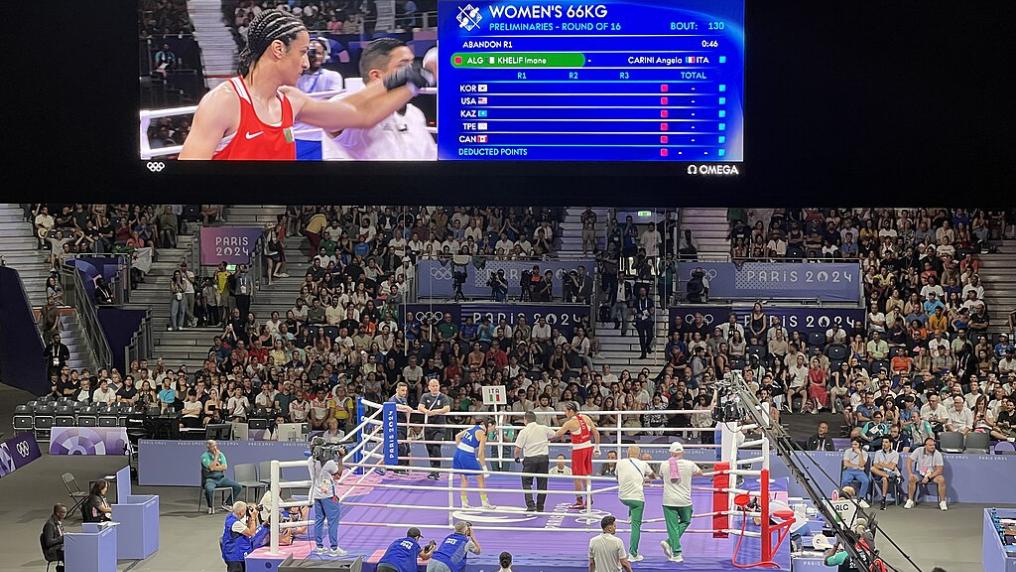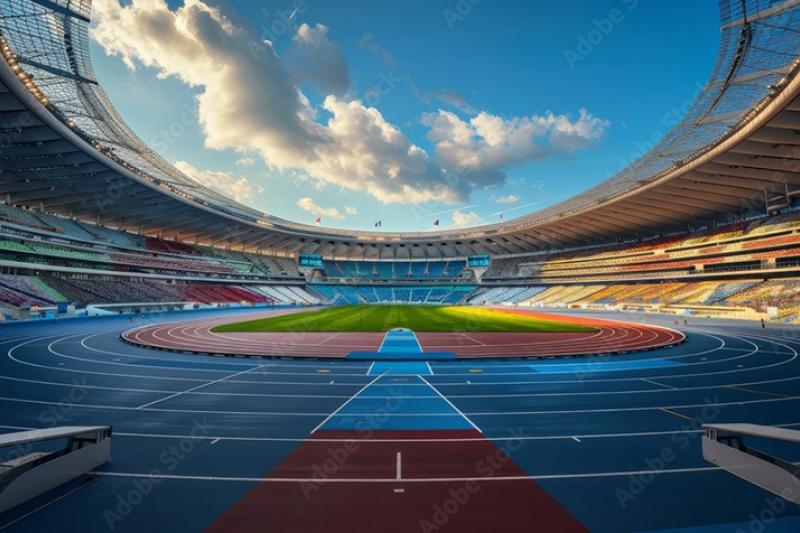Imane Khelif & the making of Olympic icons

Once again the Olympics has captivated much of the world with extraordinary feats of athleticism, glorious joy, heart-rending despair, absurd national pride along with moments that transcend nationalism, and devastating instances of vitriol.
As the Paris Games recede and attention returns to the more banal, often diabolical, concerns of daily life, a wonderful array of striking images remain with which to remember the 2024 Olympics.
From the extraordinary salute to gymnast Rebeca Andrade by Simone Biles and Jordan Chiles, to the meme inspiring coolness of South Korean pistol shooter Kim Yeji, to the joy of dual gold medalist Jess Fox jumping into the water to celebrate her sister Noemie’s kayaking gold — women were at the centre of the glorious images created from the Paris Games.
Yet it is the attempted misuse of certain images which might create the most enduring legacy of these Games.
At issue are not only debates about gender and race, but also a clear illustration of the way the moral panic about trans women harms other women as well.
Visuals have long been central to the stories that the Olympics creates, and the stories that it seeks to tell. Gender and race were at the forefront from the start.
From its inception in 1896, the modern Olympics sought to create a powerful iconography of visual images to deify sport.
Opening and closing ceremonies highlighted the spectacle of the Games, while from 1908 until Melbourne in 1956, each summer Games was heralded by a poster showcasing the idealised and generally naked bodies of powerful white men.
In 1936 the diminutive brown-haired Hitler brought television to Germany in order to broadcast his fascistic white supremacist vision of dominant tall blond blue-eyed men to the world — only for the African American athlete Jesse Owens to famously disrupt those visions with his four gold medals as the crowd in Berlin chanted his name.
Then in 1968 the iconography of the Olympics was forever altered by two black men — Americans John Carlos and Tommie Smith — raising their fists with pride and a call for justice in what came to be known as the Black Power salute, while a white man — Australian Peter Norman — stood alongside them in solidarity wearing the same protest badge.
Powerful women, however, were conspicuous in their absence from the official images used to promote the Olympics.
Indeed, the bodies of strong athletic women have been more likely to attract suspicion and censure, than celebration, as the advent of ‘sex testing’ shows.
The ancient Olympics had excluded women, and the founder of the modern Olympics, Pierre de Coubertin, sought to do the same. De Coubertin was inspired by the British notion that sports could turn boys into good strong men.
“The Games,” he proclaimed, “are the solemn and periodic exaltation of male sport — with the applause of women as a reward.
“An Olympiad with females would be impractical, uninteresting, unaesthetic and improper.”
The International Olympic Committee (IOC) has recently sought to defend de Coubertin, arguing that he was just trying to protect women from prurient spectators.
However, protecting women from themselves was one of the main rationales used to exclude them from sport. Women’s bodies were too weak, too frail. Athletics was too dangerous, especially when it came to contact sports.
Inclusion had to be fought for at every turn, despite countless Olympics revealing that the belief that there is no mass audience for women’s sport is, in fact, nonsense.
A rival Olympiad for women in the 1920s spurred the IOC to reluctant concessions around athletics, but from 1928 to 1960 the percentage of female competitors only increased from 10 percent to 11 percent.
Despite a woman running the original modern Olympics marathon course in 1896, it took until 1984 for women to be ‘allowed’ to compete in this event at the Olympics.
And even in 2024, when women make up half of the athletes at the Games, the length of the cycling road race for women (157.6km) was more than 100km shorter than for the men (272km).
Nevertheless, women were at the centre of the glorious photographs created from the 2024 Olympics.
And it was the images of one female athlete that gained the most attention: Algerian gold medal boxer Imane Khelif.
In the guise of protecting women, Khelif was wilfully misgendered as a man who threatened the safety of the women she was fighting.
It is no accident that the celebrities leading these disingenuous charges turned to visual images as if they provided proof of their claims.
Not only are pictures supposed to tell a thousand words, they are also supposed to convey the truth. Especially when it comes to notoriously slippery notions of gender, sex, and race.
And, over the last few years, pictures of athletes like Hannah Mouncey and Lia Thomas have been used by anti-trans activists to represent trans women as monstrous threats to cis women.
Yet these images draw on longstanding fears of powerful women that have been used to limit the participation of many cis girls and women in sports.
Martina Navratilova and Serena Williams, for example, were regularly vilified as monstrous through the use of pictures and cartoons, as if their dominant strength was unnatural and a threat to the safety of other women.
Underlying the misuse of such images remains idealised notions of women as weakly feminine, in need of constant protection.
The broad harm of such notions of “true” femininity were apparent in the tears of US rugby player Ilona Maher whose superb play was questioned, rather than celebrated, by some people due to her physical prowess.
In the end, a pair of photos of Khelif provided the most compelling iconography of the 2024 Games.
In one, we see the grace of her, and her final opponent, Yang Liu, smiling as they embrace after their gold medal bout.
And in the other, we see Khelif saluting in glorious pride as a sovereign woman who has just won a gold medal.
Iconic images of athleticism and joy indeed.
Associate Professor Matthew Klugman is an Australian Research Council Future Fellow at Victoria University’s Institute for Health & Sport with the Community Identity and Displacement Research Network (CIDRN) and a Research Fellow in the Chief Albert Luthuli Research Program, University of South Africa. Their research examines the intersecting histories of sports, emotions, race, gender, sexuality, medicine, science, migration, the visual, and bodies.
Associate Professor Klugman’s research has been funded by the Australian Research Council FT230100681.
Originally published under Creative Commons by 360info™.



